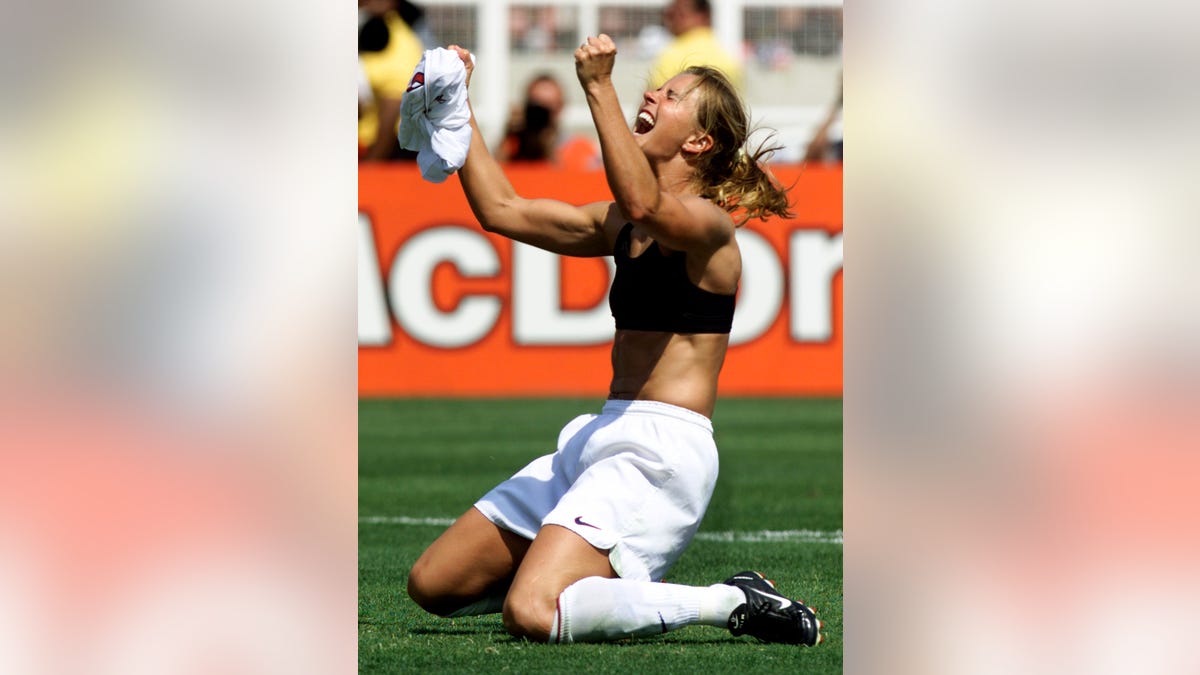
Brandi Chastain celebrates her winning penalty kick to defeat China 5-4 at the Women's World Cup soccer final between the two countries, July 10, 1999 at the Rose Bowl.
Brandi Chastain, who scored the game-winning penalty kick that gave the United States the 1999 Women's World Cup title, has pledged to donate her brain for concussion research when she dies.
Chastain announced her pledge to the Massachusetts-based Concussion Legacy Foundation on Thursday morning. Her brain will go to the VA-BU-CLF Brain Bank, a joint project with the Department of Veterans Affairs and Boston University School of Medicine.
"It is really about: How I can help impact soccer beyond scoring a goal in 1999 in the World Cup final. Can I do something more to leave soccer in a better place than it was when I began this wonderful journey with this game?" she said.
Researchers are studying the post-mortem human brain and spinal cord tissue in hopes of diagnosing and treating chronic traumatic encephalopathy, or CTE, a degenerative condition caused by a blow or blows to the head.
The research team last month announced that it had found signs of CTE in the brain of former Oakland Raiders quarterback and NFL MVP Ken Stabler.
But of the 307 brains in the bank, just seven come from women and none of those have been found to have CTE.
"We currently know so little about how gender influences outcome after trauma; her pledge marks an important step to expand our knowledge in this critical area," said Dr. Ann McKee, director of the brain bank program.
Chastain isn't sure she's had concussions, but suspects she has had at least a couple. In her playing days, there wasn't the knowledge about concussions that there is today.
"You just shook it off back then," she said.
Chastain played for the U.S. national team from 1988-2004. She was on the team that won the inaugural Women's World Cup in 1991, as well as its second in 1999. The iconic image from that second title came moments after Chastain's left-footed penalty kick against China when she doffed her jersey in celebration at the Rose Bowl.
Today, Chastain is a youth coach and mom living in the San Francisco Bay Area. She believes awareness is growing, and has partnered with the Concussion Legacy Foundation's Safer Soccer Initiative, which calls on youth coaches to eliminate headers in practice and in games for kids under the age of 14.
"It's been a journey about education for me," she said. "I've been involved in sports for a long time, only up until recently, have people been talking about concussions, and then concussions specifically related to soccer. It's been mostly a football problem or a football issue. But it's not."
A study published in the American Journal of Sports Medicine in 2012 showed that football had the greatest incidence of concussions among high school athletes. Girls' soccer was second. Other more recent studies show boys' ice hockey and lacrosse to also have high rates of concussions.
The Concussion Legacy Foundation was involved in identifying the first case of CTE in a soccer player after examining the brain of Patrick Grange, an aspiring pro known for his headers who died in 2012 at age 29.
